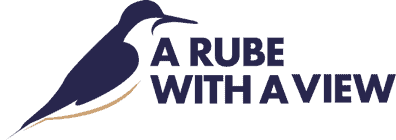Previous Post
2
We arrived in Porto Allegre after a brief stop in Sao Paulo on April 1st. Our home team in the expedition included Stephanie Fiegin, a Ph.D. student whose dissertation will rely on results from our tracking project in Lagoa do Piexe. She co-authored the proposal funding the project. Lori Talbot and her husband, Keith, joined our project for the experience. I am sad to say Lori retired from her medical practice, which included my wife Mandy and I, last year. Fortunately, she agreed to join our group as an unofficial team doctor. It’s a big job. Of all things I’ve learned about Brazil, the most difficult has been the diseases. I led expeditions to the northern coast of Brazil in Para and Maranhoa for five years. I returned from three after nasty bouts with gastroenteritis, one requiring a trip to the emergency room. I returned from the other two with bronchitis, ultimately leading to mysterious late-onset asthma that I still battle. The CDC requires shots for horrific diseases like typhoid and yellow fever to come to the country. Equally frightening are diseases like Dengue and Malaria, which has no vaccine. As the oldest on the team, I especially appreciated Lori’s role.

Lori and Keith Talbot both working way below thier paygrade, Lori a Physician and Keith a lawyer
At the airport, we met Julia Finger, another Ph.D. student from Virginia’s Petry’s lab working on Giant Petrel habitat dynamics in Antarctica. She participates in Antonio’s LDP project and all other projects supervised by Virgina, who requires the same of all her students. The shared experience gained by each student participating in the other’s projects provides practical training for these young biologists, who immediately impress with thier command in the field.
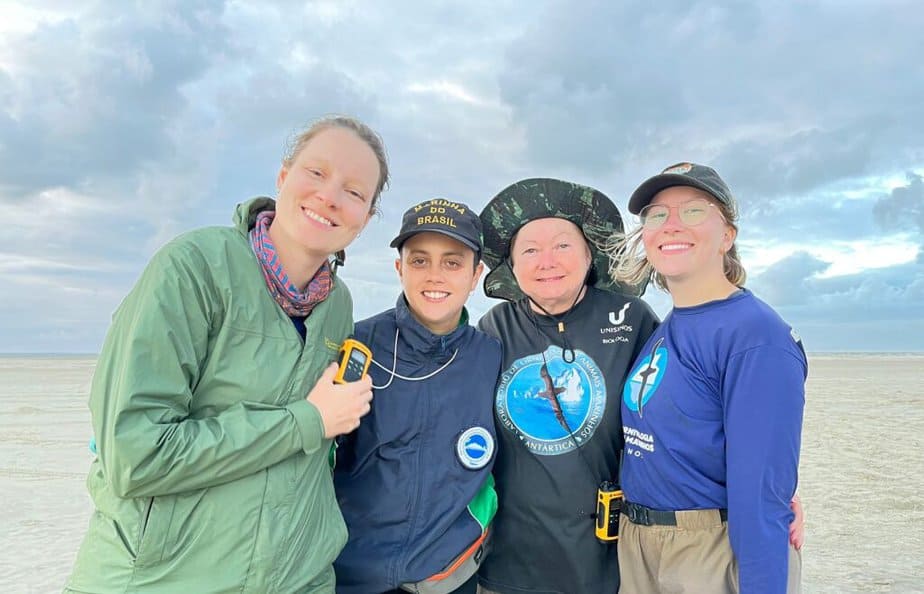
Professor Petry’s Students from left Julia Finger, Victória Renata Fontoura Benemann, Professor Maria Virginia Petry, and Victória Deecken Photo by Julia Finger
Julia took us to the campus of Unisinos University and Virginia Petry’s lab while we waited to pick up the rental trucks. This Jesuit University was established in 1969, focuses on science and technological innovations, and is recognized as one of Brazil’s best private schools. The campus shone in this early Austral autumn afternoon from the sun in a nearly cloudless sky of low humidity and cool air. The glass facades of the campus buildings reflected the sun lighting up lawns and ponds while leaving the pine and fig park woods cool and shadowy. With no dorms, most students live modestly off campus, often commuting from thier parent’s homes, one reason why the campus was almost empty on this Saturday. We read several scientific paper posters created by Virginia’s student hanging on the wall outside the student’s lab, including one on Trinidad Petrel and Masked Booby, who range widely across the southern ocean. Despite the bucolic setting, attendance at the University has dropped dramatically, and the Univesity administration is looking at cuts that could affect Virgiina’s lab and her students.
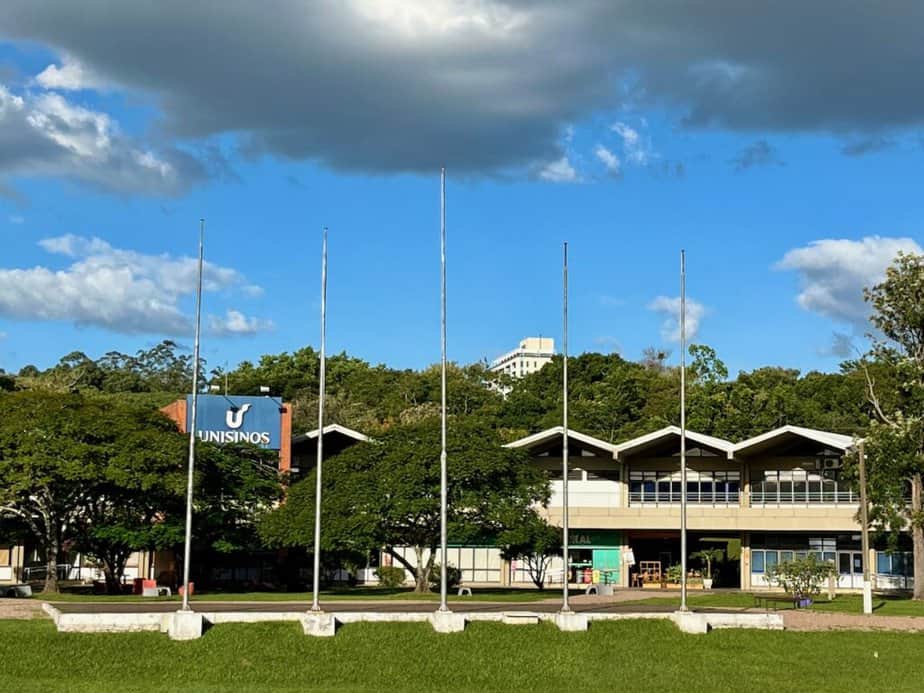
Unisinos University Porto Alegre, Brazil
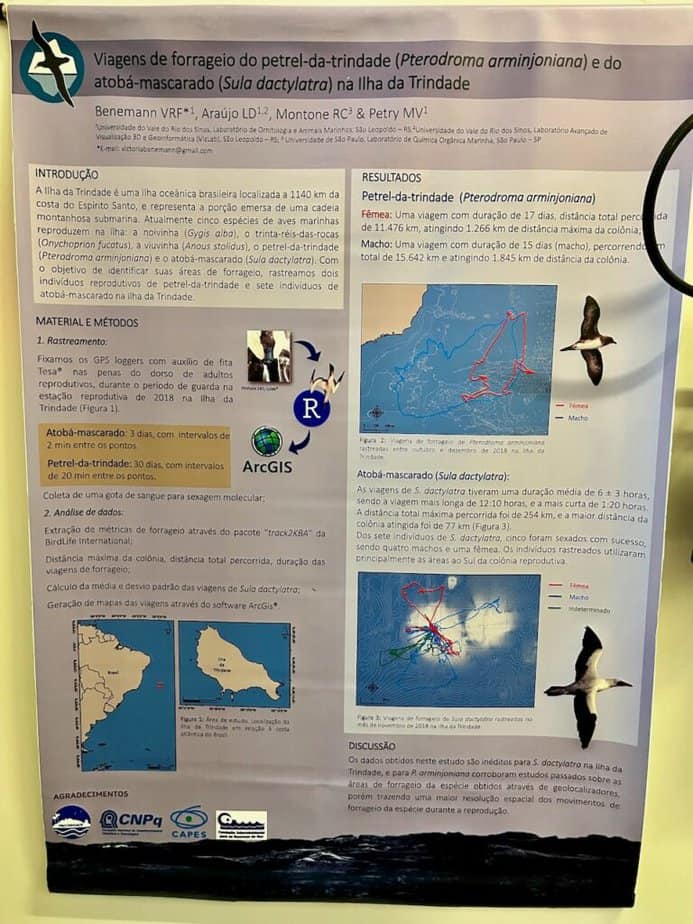
A poster outside Virginia Petry’s lab describes the results of a study on Trindad Petrels and Masked boobies using radio telemetry.
We left campus and met Antonio at the truck rental, and soon we were off to Mostardos, a small working-class town only a few miles from the Atlantic. We arrived three hours later and ate a quick dinner at Pizzaria e Restaurante Maresia in Mostardos before going to our lodgings. They were rustic cabins on a 500-acre farm called Aldeia Santuario das Aves or ASA. The owners, Julia and her father Renato Callares de Brum Marantes, repurposed the farm to continue raising sheep and horses but devoting much of the land to a refuge for wildlife. They built three cabins, each containing Euro-quality bathrooms and kitchens, on the eastern side of the land along the boundary with Lagoa do Piexe. Visitors are welcome to enjoy this working farm or the forest and Lagoon from one of the several trails on the property.
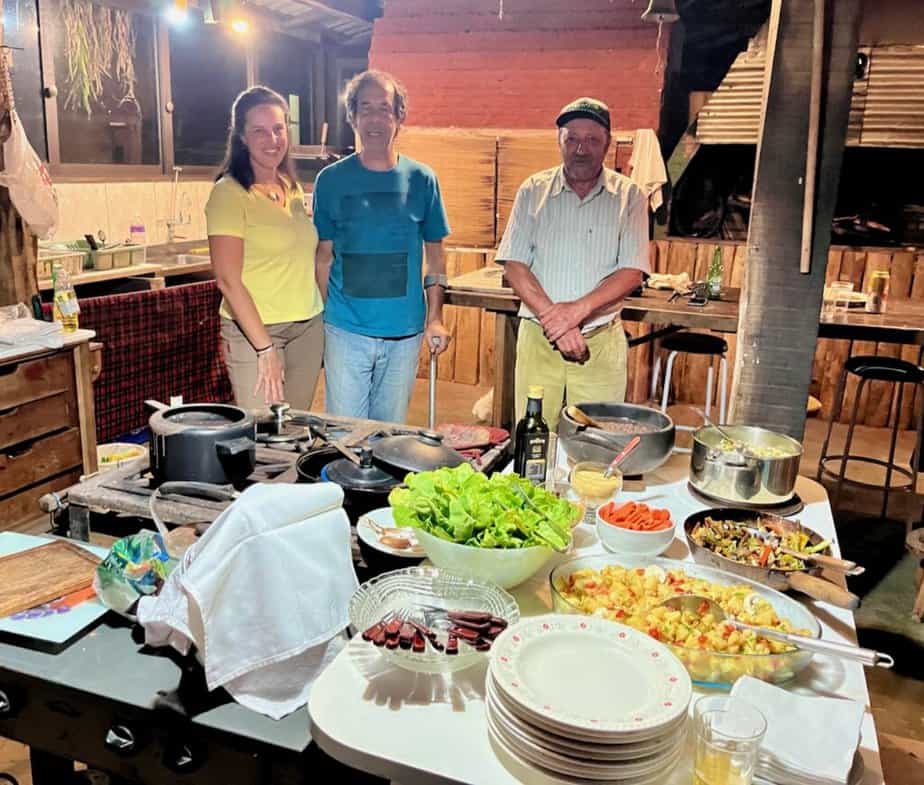
We stayed on a 400 acre farm known as Aldeia Santuario das Aves or ASA. The owners, Julia and her father Renato Callares de Brum Marantes repurposed the farm to continue raising sheep and horses but devoting much of the land to a refuge for wildlife
Lori, Keith, and I moved into one cabin after returning from Mostardos in darkness. We were delighted to find that we would be greeted each morning with fresh yogurt, granola, eggs, and fresh bread cooked by two bread-making machines in Julia’s kitchen. We also learned they filtered the well water so we could drink from the tap, a rarity in rural communities of Brazil. The rest of the team stayed in another larger but equally appointed cabin. Stephanie, Antonio, and Julia joined Victoria Renata Fontoura Benemann, a master’s student working on Blue Footed Boobies on a Brazilian island in the center of the Atlantic Ocean called the Archipelago of Peter and Paul. Also in the house were Mateo Luis Haas and Victoria Deecken Becker, both undergrads helping the grad students and developing student thesis on microplastics and fish biology.
Antonio reported they had found over 200 red knots in the Park, so we were hopeful for quick success and possibly downtime to explore the area. We had no way of knowing we would spend almost every minute of daylight for the next eight days trying to catch birds.
Next Post
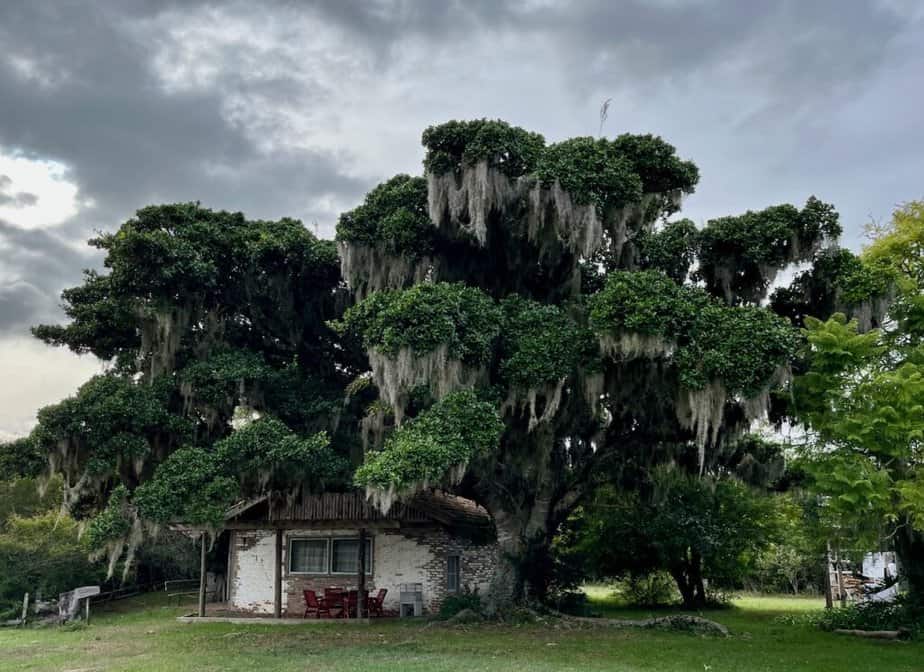
One of three cabins at Aldeia Santuario das Aves or ASA in Mostardos, Brazil.
